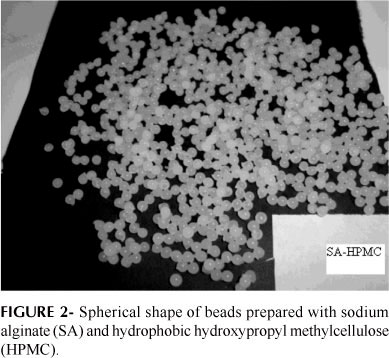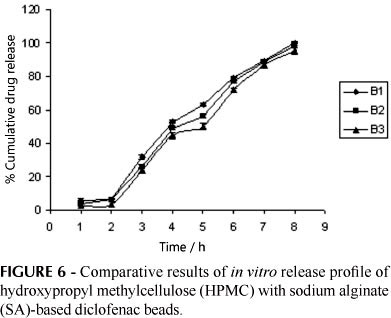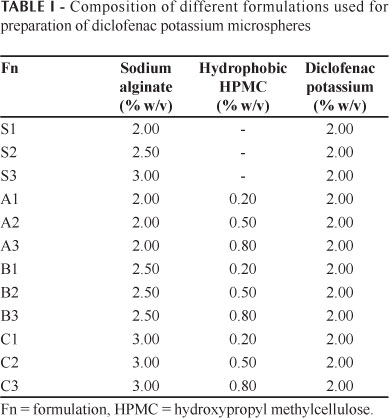This study aimed to obtain site-specific and controlled drug release particulate systems. Some particulates were prepared using different concentrations of sodium alginate (Na-Alg) alone and others were formulated using different proportions of Na-Alg with hydroxypropyl methylcellulose (HPMC) stearoxy ether (60M viscosity grade), a hydrophobic form of conventional HPMC, using diclofenac potassium (DP) by ion-exchange methods. Beads were characterized by encapsulation efficiency, release profile, swelling, and erosion rate. The suitability of common empirical (zero-order, first-order and Higuchi) and semi-empirical (Ritger-Peppas and Peppas-Sahlin) models was studied to describe the drug release profile. The Weibull model was also studied. Models were tested by non-linear least-square curve fitting. A general purpose mathematical software (MATLAB) was used as an analysis tool. In addition, instead of the widely used linear fitting of log-transformed data, direct fitting was used to avoid any sort of truncation or transformation errors. The release kinetics of the beads indicated a purely relaxation-controlled delivery, referred to as case II transport. Weibull distribution showed a close fit. The release of DP from Na-Alg particulates was complete in 5-6 hours, whereas from Na-Alg hydrophobic HPMC particulate systems, release was sustained up to 10 hours. Hydrophobic HPMC with Na-Alg is an excellent matrix to formulate site-specific and controlled drug release particulate systems.
Drugs; Drugs; Hydroxypropyl methylcellulose stearoxy ether; Sodium alginate; Direct fitting; Case II transport; Beads; Beads




















